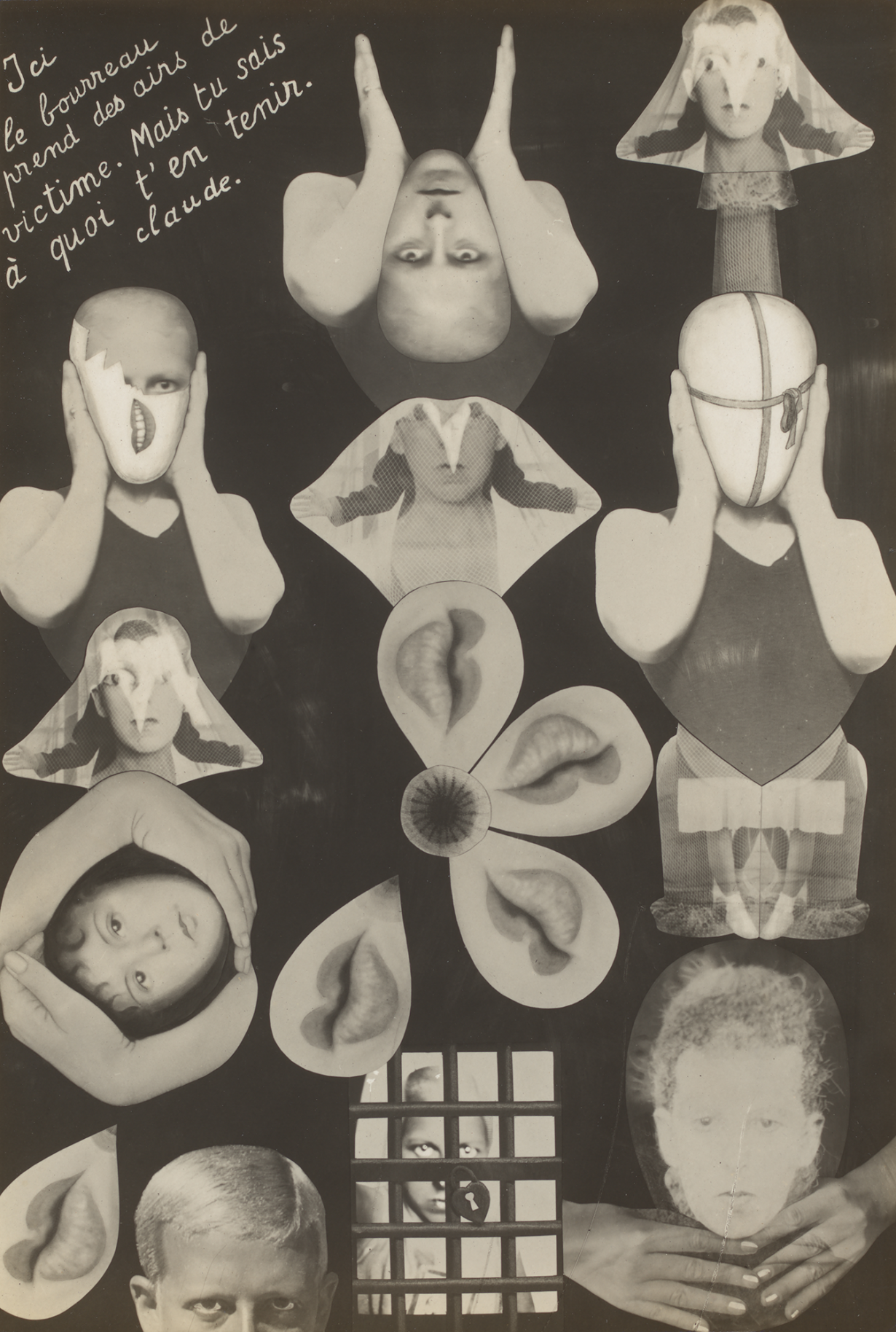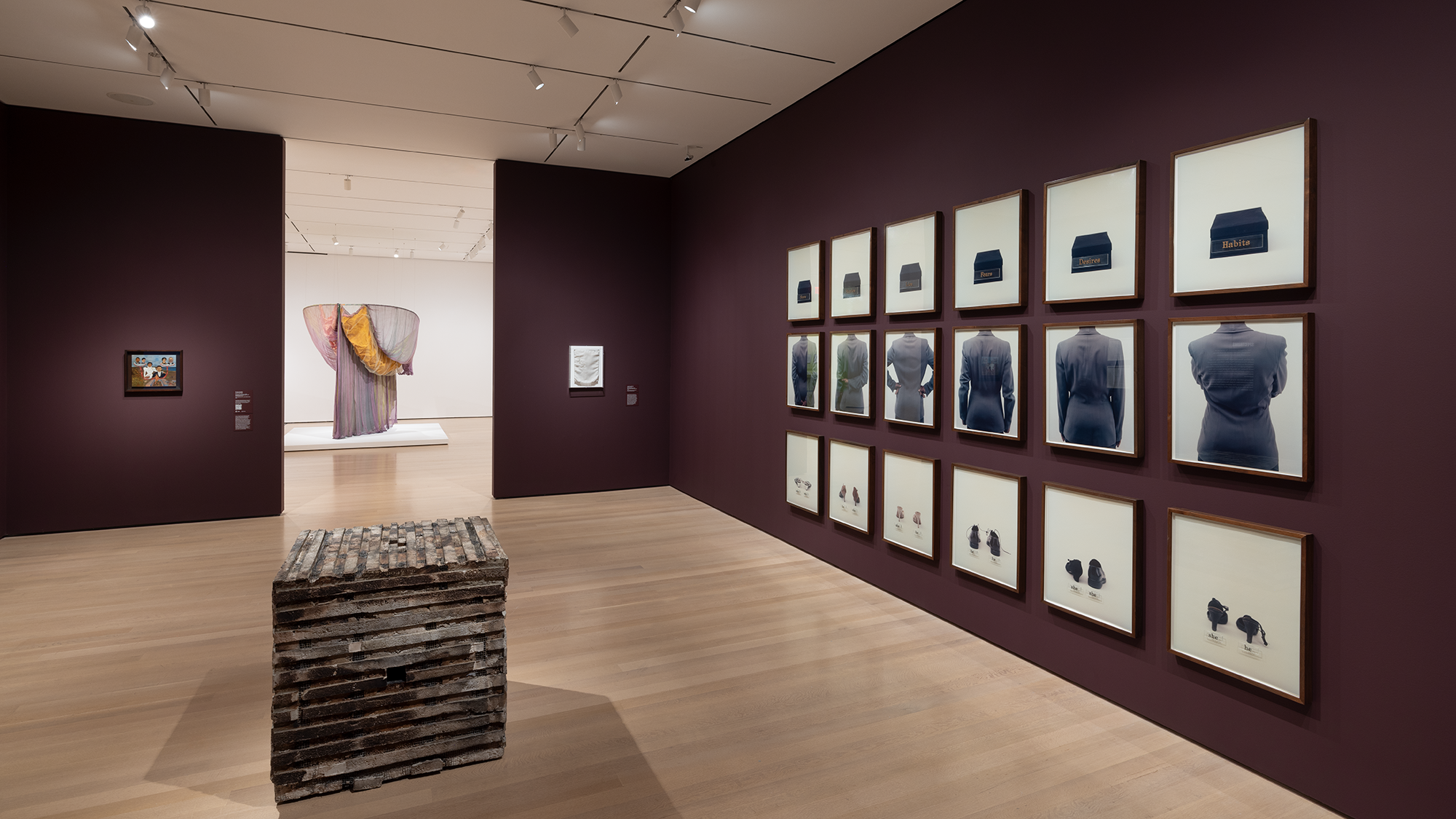Vital Signs at MoMA explores how artists have abstracted bodily experience as a means of mapping the construction of identity
In their collaborative drawing game exquisite corpse, the Surrealists produced sprawling absurdist figures in jump-cut segments. While the game’s originators sought to, in the words of André Breton, ‘fully release the mind’s metaphorical activity’, Vital Signs spotlights artists who expanded on the abstract strategies of Surrealism to represent the complexities of bodily experience, particularly those othered by gender, sexual identity and race.
Spanning the early twentieth century to the 2010s, with a focus on the late 1960s to early 90s, the exhibition highlights major figures of the early feminist art movement. It features, for instance, the stretched pantyhose of Senga Nengudi’s sculpture and performance series R.S.V.P. (1977), two Judy Chicago vaginal car-hood designs (1965/2011), Ana Mendieta’s painted work Untitled (Amategram) (c. 1982) and Mary Kelly’s notorious Post-Partum Document (1973–79), among others. It also brings attention to lesser-known ‘outsider’ artists, such as Forrest Bess, a painter of spare abstract images based on visions of spiritual and physical transformation, and Ted Joans, organiser of the correspondence drawing project Long Distance (1976–2005).
In 1975 Joans ‘got the idea of creating the longest exquisite corpse ever’, according to historian Robin D.G. Kelley, a friend of the beatnik painter and filmmaker. Joans brought together over 130 contributors including jazz musicians, Beat poets and other avant-garde artists to make a rollicking exquisite corpse that spans nearly 30 years and more than 11 metres of perforated computer paper. Displayed in a long vitrine next to a pile of packaging used to ship the project around the world, the sinuous Long Distance contains fantastical faces, limbs, bits of text and extended shapes that suggest the free thinking that connects Joans’s chosen artists, which included leaders of the Black Arts Movement and other countercultural groups.

Some works in Vital Signs abstract the body – breaking it down, changing its shape, colour and other properties – in order to map the construction of identity and posit alternative paths. Claude Cahun’s M.R.M (Sex) (c. 1929–30) appropriates the style of the cadavre exquis in a photocollage that slices and manipulates images of the artist, intercutting masculine and feminine poses to create fluid figures that appear as both ‘victim’ and ‘executioner’ of these binaries per the work’s inscription. In Rosemary Mayer’s Galla Placidia (1973), recently acquired by MoMA and displayed here for the first time, cheap fabrics hand-dyed by the artist drape from a hanging bentwood armature to create a billowing form at once fleshy and architectural, amplifying the body’s materiality at monumental scale.
With the exhibition’s big-tent approach comes the challenge of how to organise such a wide swath of material. The show is at its best when, rather than trying to unify various makers under broad headings – like ‘Mirrors’ or ‘Spectrums’ – it embraces the polyphony of the cut-up. One particularly strong and tightly arranged grouping of works on paper consists of an expressive visage punctuated by antenna-like curls by the Southern folk artist Minnie Evans (Untitled, c. 1944), the Chicago Imagist Christina Ramberg’s fragmented, obscured and bound female figures (Untitled, c. 1968), a face covered by a high-relief sculpted hand by Marisol (Drawing with Sculptured Hand, 1960) and Jasper Johns’s encaustic teeth marks on canvas (Painting Bitten by a Man, 1961). Expertly wielding humble, tactile materials, these works maintain a disquieting power decades later – showing what it’s like to have a body and, perhaps, how to bite back.
Vital Signs: Artists and the Body at the Museum of Modern Art, New York, through 22 February
From the January & February 2025 issue of ArtReview – get your copy.
